Guides
Find in this section the guides produced by the CPRQ, concerning the relocation of an archives repository, access to the archives of religious communities, the conservation and maintenance of movable property as well as good practices to promote the accessibility of places of worship and guided tours.
Archives Moving Guide
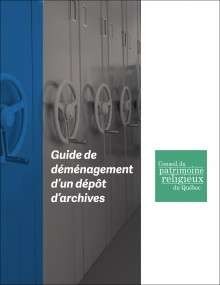
A new addition to the Quebec archival literature the Guide de déménagement d'un dépôt d'archives consists of 16 topical sections corresponding to different stages of the moving process; from choosing a location to house the archives through to opening the new facility for operation. The guide includes a number of useful appendixes: a checklist, a glossary of terms, a bibliography and resources.
Produced by the Archives Committee of the Québec Religious Heritage Council, through the financial support of Bibliothèque et Archives nationales du Québec, this guide was launched on April 15th, 2016 during the 4th Conference of Religious Archives.
Guide to access to the archives of religious communities
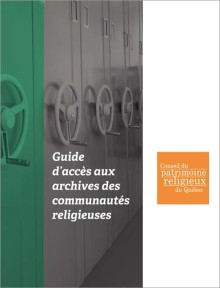
This guide produced by the Archives Committee of the Conseil du patrimoine religieux du Québec with the financial support of Bibliothèque et Archives nationales du Québec, addresses the major issues surrounding the rights and duties of archivists, institutes and researchers towards the archival heritage of religious communities, custodians of unique and tangible heritage.It aims to equip peers already trained in the multiple tasks inherent in the management of active, intermediate and definitive archives, and to make researchers aware of the context in which archivists must work.
Guide des bonnes pratiques pour favoriser l'accessibilité des lieux de culte
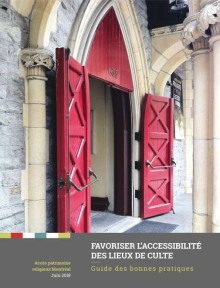
This guide aims to promote the accessibility of places of worship by providing those in charge with the tools necessary to ensure their cultural vitality. It supports the goal of raising public awareness of the richness of the religious heritage by promoting its appropriation and it focuses on an opening in all simplicity, to encourage new implications, especially communitarian, in a context where the religious heritage gains interest in the touristic and cultural plan.
The publication of this guide is an initiative that originated at a coffee-discussion held on March 16, 2018 in Montreal, at the instigation of the Québec Religious Heritage Council's Montreal Concertation Table. It continued in the same vein as the Ulysse travel guide Montréal, a religious heritage to discover. The best practices guide's publication was made possible thanks to the rich contribution of the coffee-discussion participants, who also supported the name "Accès patrimoine religieux Montréal" to gather the group initiatives expected for the future.
Offer Guided Tours in a Place of Worship. Accompanying Booklet for the Responsables and the Guides.
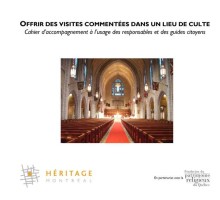
Scattered throughout Montreal’s neighbourhoods are places of worship that are wonders to behold and that reflect the city’s history and cultural diversity. They’re attracting more and more attention from people and prompting parishes and congregations to think about how they can better receive visitors and interpret the building’s history. It's not always easy to tell the story behind an inscription, a marquee, a stained-glass window, a painted vault, or an ornament atop a steeple, but such story telling can enhance not only the building’s value, but also all of our heritage. It is in this spirit that the guide is offered to officials of places of worship and to citizens so that they can, with the help of sound advice and concrete examples, better share the pleasure of knowing our heritage.
Church property: conservation and maintenance of movable heritage
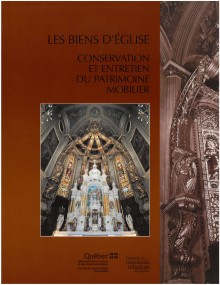
Church property: conservation and maintenance of movable heritage, is a publication published in 2001 by the Center de conservation du Québec, in collaboration with the Quebec Religious Heritage Foundation (which has since become the Quebec Religious Heritage Council). You can consult the guide in text format on the CCQ website (French only).
The various sheets contain a wealth of information on the handling, maintenance, display and proper storage of the works and objects that make up the religious movable heritage. Whether it be sculptures, stone monuments, furniture, wall paintings, pieces of goldsmithery, priestly vestments, archives, stained glass windows or even organs, each type of object requires special care according to its nature.